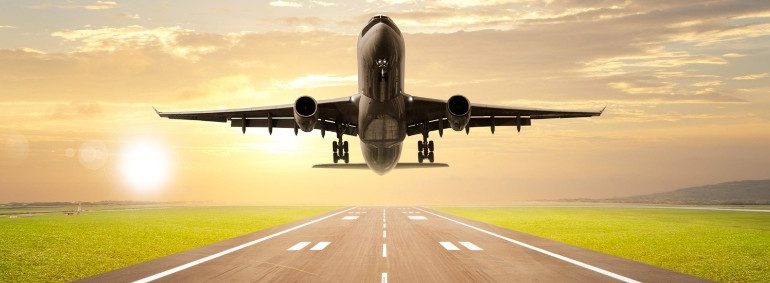The Indian government is working to make India one of the world’s major aviation hubs by 2040 that may see major changes in tax structure, fleet size, privatisation, number of airports, automation and indigenous aircraft manufacturing capacity.
Initiatives like Nabh Nirman (to augment airport capacity), Digi Yatra (for paperless travel) and AirSewa (for online grievance redressal) are bringing in radical changes, as per recent FICCI-KPMG report ‘Vision 2040 for the Civil Aviation industry in India’.
The Vision 2040 document highlights the growth potential in different sub-sectors of Indian aviation and the key action steps required thereof.
The tax structure for Aviation Turbine Fuel (ATF), Maintenance, Repair and Overhaul (MRO) and aircraft leasing may be gradually aligned with leading global jurisdictions.
If the trend continues, India would become one of the top aviation hubs by 2040.
India has one of the largest aircraft order books currently with pending deliveries of over 1,000 aircraft, the Vision 2040 report noted. India’s commercial airline fleet is likely to grow from 622 in March 2018 to around 2,359 in March 2040.
The government has decided to privatise its national carrier Air India and helicopter company Pawan Hans, something unthinkable in the past.
India, which has 99 operational airports currently, may have 190-200 operational airports in 2040. Its top 31 cities may have two airports and the cities of Delhi and Mumbai three each. The incremental land requirement is expected to be around 150,000 acres and the capital investment (not including cost of acquiring land) is expected to be around USD 40-50 billion.
The government may establish a Nabh Nirman Fund (NNF) with a starting corpus of around USD 2 billion to support low traffic airports in their initial phases.
Air cargo throughput is projected to quadruple to 17 million tons in FY 2040. Cargo processing will be completely paperless and dwell times reduced to just 1-2 hours. India’s freighter fleet is likely to expand multifold with the growth in e-commerce and the country will gradually become a transshipment hub for entire South Asia.
With conducive policies and a large fleet of over commercial and military aircraft, India will build its indigenous aircraft manufacturing industry in collaboration with global OEMs. By 2040, India will assemble nearly 70 per cent of its commercial aircraft demand and also export to other countries.
India will establish its own aircraft leasing industry which may handle almost 90 per cent of aircraft being ordered in India by 2040.
India’s tax structure and repossession processes will be equally or more attractive than those in leading global jurisdictions. A significant course correction in policies, taxation and customs procedures will enable growth of India as a global MRO hub by 2040, handling nearly 90 per cent of the MRO requirements of large Indian carriers.
By 2040, India will witness a boom in usage of drones and helicopters, especially in urban commuting and medical evacuation. With a supportive policy regime, India could become a global leader in research, design and manufacturing of drones and anti-drone systems. There could be over 200 amphibious aircraft located across India’s coastline and waterbodies.
Over the next 5-8 years, all Indian aircraft will be flying on satellite-based GAGAN system developed by AAI and ISRO. This will lead to better airspace utilisation and safer operations despite reduced aircraft separation.
Ground handling and airport operations will be highly automated and driven by electric ground support equipment. Check-in, bag drop, immigration clearance, retail shopping among others will be automated, with minimal human intervention.
Indian airports will invest heavily in cloud computing capabilities, which will enable integration of different safety and security data sets such as security camera feeds, facial recognition, luggage scans and security incident reports.
India will witness a massive upgrade of its aviation education and skilling infrastructure. Its affordable and high-quality aviation education system will attract students from across the globe.
DGCA may be converted into a fully-independent Civil Aviation Authority, with its own sources of funding and freedom to recruit professionals. Most transactions with DGCA will be automated with minimal human interface, the report said.
Implementation of Vision 2040 will require a robust monitoring mechanism. A duly empowered Vision 2040 Program Management Unit (VPMU) will need to be set up. It will be supported by Vision 2040 Task Forces (VTF) for separate sub-sectors.
However, the report suggests that the road to 2040 will not be easy. The Indian government, industry and academia will need to work closely together. India will also need to collaborate with aviation leaders across the globe for knowledge and advice.
(The author is Chairman, FICCI Civil Aviation Committee and President & MD, Airbus India)





